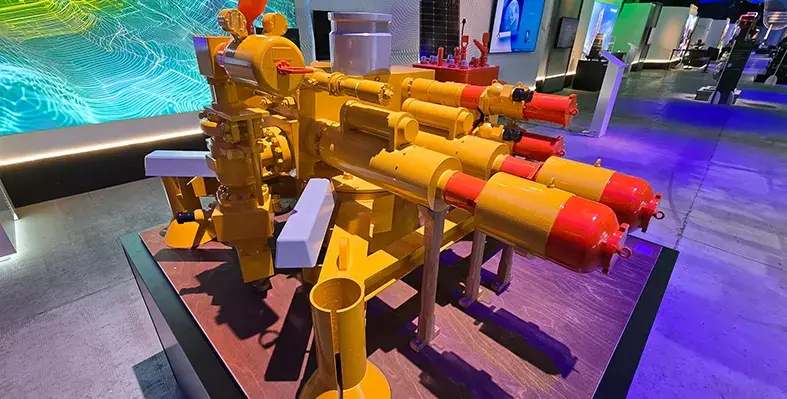With emissions reduction and efficiency gains at the top of the agenda for oil and gas companies, Baker Hughes has launched three new electrification technologies for onshore and offshore operations at its 25th Annual Meeting in Florence, Italy
The Hummingbird all-electric land cementing unit is a 100% electric solution that replaces diesel engines with grid-connected or battery-powered motors. The Hummingbird’s dual-power functionality performs onshore cementing operations with lower emissions and noise levels compared to traditional solutions.
The use of electronic, rather than hydraulic components, results in lower maintenance costs and requirements while enhancing reliability in the field. Hummingbird is designed to operate in high-pressure situations and is equipped with monitoring and control systems that provide enhanced cement job control and consistency across applications.
Part of Baker Hughes’ intelligent completions portfolio, SureCONTROL Plus interval control valves (ICV) enable electrical remote operations for more efficient zonal control of both subsea and dry tree wells. These ICVs replace numerous hydraulic lines with a single electrical line, simplifying complex installations, reducing rig time and accelerating production while limiting the need for costly interventions.
SureCONTROL Plus can control a higher number of zones than traditional hydraulic ICVs for enhanced production. The digital telemetry system provides continuous data, which enables improved asset performance management and proactive maintenance of downhole tools.
Baker Hughes also announced its new all-electric subsea production system, a fully electric topside-to-downhole solution for offshore operations. This modular system allows for existing tree designs to be seamlessly updated for electric operations, while electro-hydraulic trees currently operating in mature assets can be retrofitted for full electrification. This transition will result in enhanced production control, increased reliability and lower carbon emissions throughout the life of the field. The elimination of hydraulics will also result in reduced cost, time and complexity of subsea installations.
The all-electric subsea production system is designed for shallow and deep-water developments, making it ideal for subsea carbon capture, utilisation and storage fields as well as long offset tieback applications.
“Hydrocarbons will remain key sources of global energy for decades, and it is essential that these resources are produced with minimal carbon footprint,” said Amerino Gatti, executive vice president, Oilfield Services & Equipment at Baker Hughes. “By electrifying the production value chain, we can enhance operations to be cleaner, safer and more efficient, while continuing to supply the energy required worldwide.”Oil and gas companies are increasingly looking at electrification as a means to reduce carbon footprint. Electrification is a key plank of ADNOC’s decarbonisation strategy, for example, in the drive for net-zero emissions by 2045. Since January 2022, ADNOC has received 100% of its grid power supply from Emirates Water and Electricity Company’s (EWEC) nuclear and solar energy sources. The NOC is also constructing a US$3.8bn sub-sea transmission network, connecting ADNOC’s offshore operations to the onshore power network and displacing gas turbine generation, with the potential to reduce ADNOC’s offshore carbon footprint by up to 50%.









